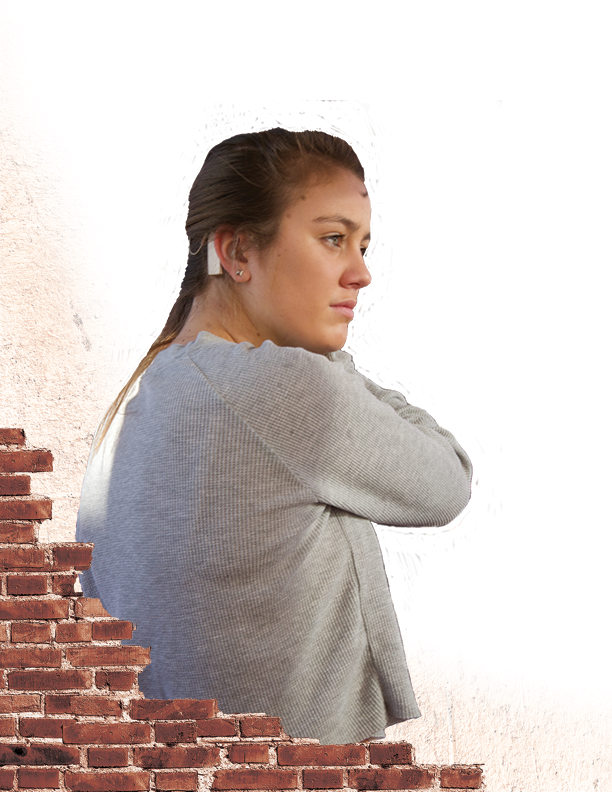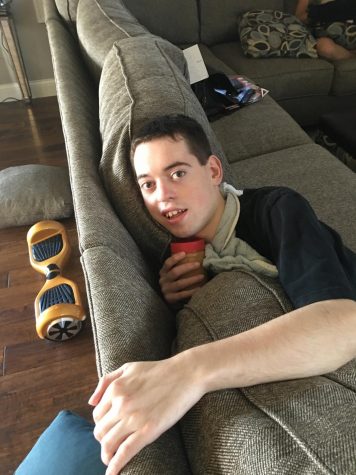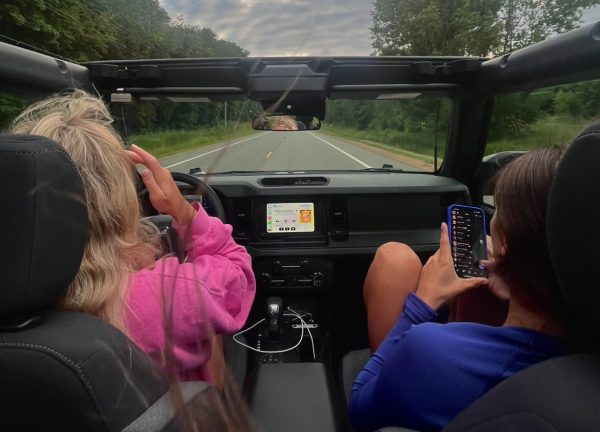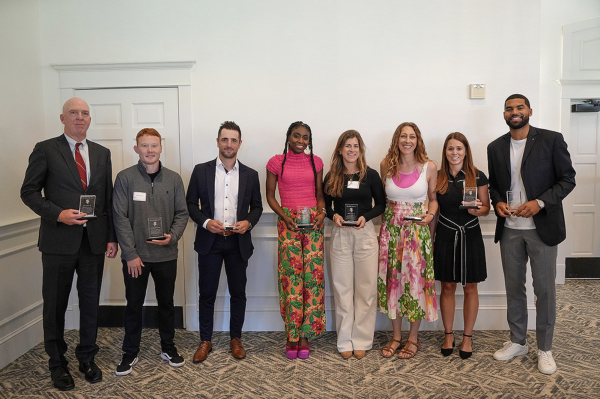BSM strives to support all students
No matter the barrier, BSM works to support all students through individualized plans, building accommodations, and all other means possible.
Sophomore Joey Trella has cochlear implants to assist her physical disability of deafness.
Sophomore Joey Trella was born deaf. Now, with cochlear implants, she takes on high school. Junior Ava Schieffert tries to catch up in English after being diagnosed with dyslexia while attending a French immersion school. Junior Grady Gordon has lived with spina bifida his whole life. These are just three of the students who deal with disabilities on a daily basis at BSM.
One way to assist students with learning disabilities is with a 504 plan, which is a layout for how a school will assist students and give them equal access to the curriculum. “Because I have dyslexia, I have a 504 plan. A 504 plan is a learning plan which helps give me accommodations to level the playing field. I get time and a half on tests because it takes me longer to read things and process things because my attention span is shorter and I get distracted a lot more easily. I get extended time, and I don’t get spelling counted against me because I spell things wrong a lot,” Schieffert said.
Students with specific physical disabilities require individualized accommodations as well. Trella is able to hear due to her cochlear implants, which are an advanced type of surgically implanted hearing aids. She got her first side done when she was a one-year-old, and the other when she was five. But, for the first year of her life, she was deaf. Due to this, she fell behind in language and was in speech therapy until sixth grade. To assist her hearing and learning in school, she had a teacher that specialized in teaching deaf and hard of hearing students and used a microphone that connected to her implants. In using the microphone, Trella was only able to hear her teacher, thus outside voices were cut out and she could focus on trying to comprehend what she was hearing. But, with disabilities, many students tend to fall behind. “I process things like a second later. So if a teacher is giving a lecture, what they said five seconds ago is still going through my brain. It’s…different than normal hearing,” Trella said.
We feel strongly about teaching kids to advocate themselves and having resources in place based on individual needs.
— Ms. Mary Andersen
Regardless of anyone’s situation, BSM strives to support all students and create the best environment to foster diversity, learning, and acceptance. In order to assist all disabilities, physical or mental, BSM has a team of three full time learning specialists. First, parents communicate their child’s needs to the school, and then the teachers become aware of the situation and accommodations needed through Powerschool. If necessary, students are also able to leave class to go to the nurse or to other services.
The building at BSM is handicap accessible, and the school works to keep it up to date. There are not many students who have physical disabilities, but BSM works to make every area of the building accessible. Gordon can’t think of better ways for BSM to help him. “[I am able to] carry my backpack, leave class a few minutes early so I don’t have to be in the hallways, use the elevator, [and at] lunch people help me carry my tray,” Gordon said.
Many renovations were made to the building after Jack Jablonski (‘14) was paralyzed playing hockey. Handicap buttons have been installed to enter the main office, students’ printer cards can be programmed to let them into the building while automatically opening the door, and there are also ramps available to students. “If the student is temporarily handicapped or injured, we make accommodations for students to leave class early or have a helper with them for books. We haven’t had a lot of permanently disabled students, but usually, we are able to work with them individually for their individual needs,” Assistant Principal Ms. Mary Andersen said.
Along with physical disabilities, there are about 200 students with mental and learning disabilities present at BSM. Some common learning disabilities include dyslexia, ADHD, dyscalculia, dysgraphia and processing deficits. In order to try to help students, BSM starts with a plan. After figuring out what a particular student needs, BSM executes the plan through the learning specialists, who routinely meet with and check on the students. “The first step is an accommodation plan, and those accommodations include preferential seating, copies of the teacher notes, extended time for tests, different settings for tests, [and] using assistive technology. The next thing is helping them use those accommodations and learn how to advocate for themselves, and by the time they get to 10th grade, they’re usually really good at that, it’s the seventh, eighth, and ninth graders I work most closely with to do those kind of things,” Director of Learning Support Ms. Kristin Gilbertson said.
I considered it like glasses…and sometimes people just don’t understand it and I get it.
— Sophomore Joey Trella
As a kid, it was hard for Schieffert to be different, but her dyslexia makes her the person she is today. In the future, she hopes for more communication surrounding learning disabilities and reducing the shame that surrounds the idea of asking for help. “I think the one thing that BSM could possibly do is to let kids know they can advocate and tell teachers when they need [help] instead of feeling ashamed and embarrassed. [During my] freshman year, I didn’t want to take tests outside of the room because I thought kids would notice,” Schieffert said.
Trella takes high school classes and doesn’t use a microphone anymore. Rather, she relies on her teachers to support her and knows to speak up when she feels behind. She isn’t ashamed of her disability––she sees her implants like glasses, they’re just there to help her out. “Teachers are amazing here. They’re all very understanding about it and I’ve never really had a problem. I get extra notes [and] time. All of the teachers accommodate a way to help me and work it into the class. The school’s been so understanding about it,” Trella said.
Disabilities don’t define students, but they do affect their lives at BSM. While the school takes steps to accommodate and support students with disabilities, it is always possible to improve the situation. “I think we’ve taken some really big steps in fostering diversity in many ways. It’s my job to work with teachers and professionals so they can better understand learning disabilities and make their curriculum and their tests more accessible. But, the teachers have been great; they have been eager to learn how to accommodate these kids if they didn’t know already and some even give me ideas,” Gilbertson said.


















































